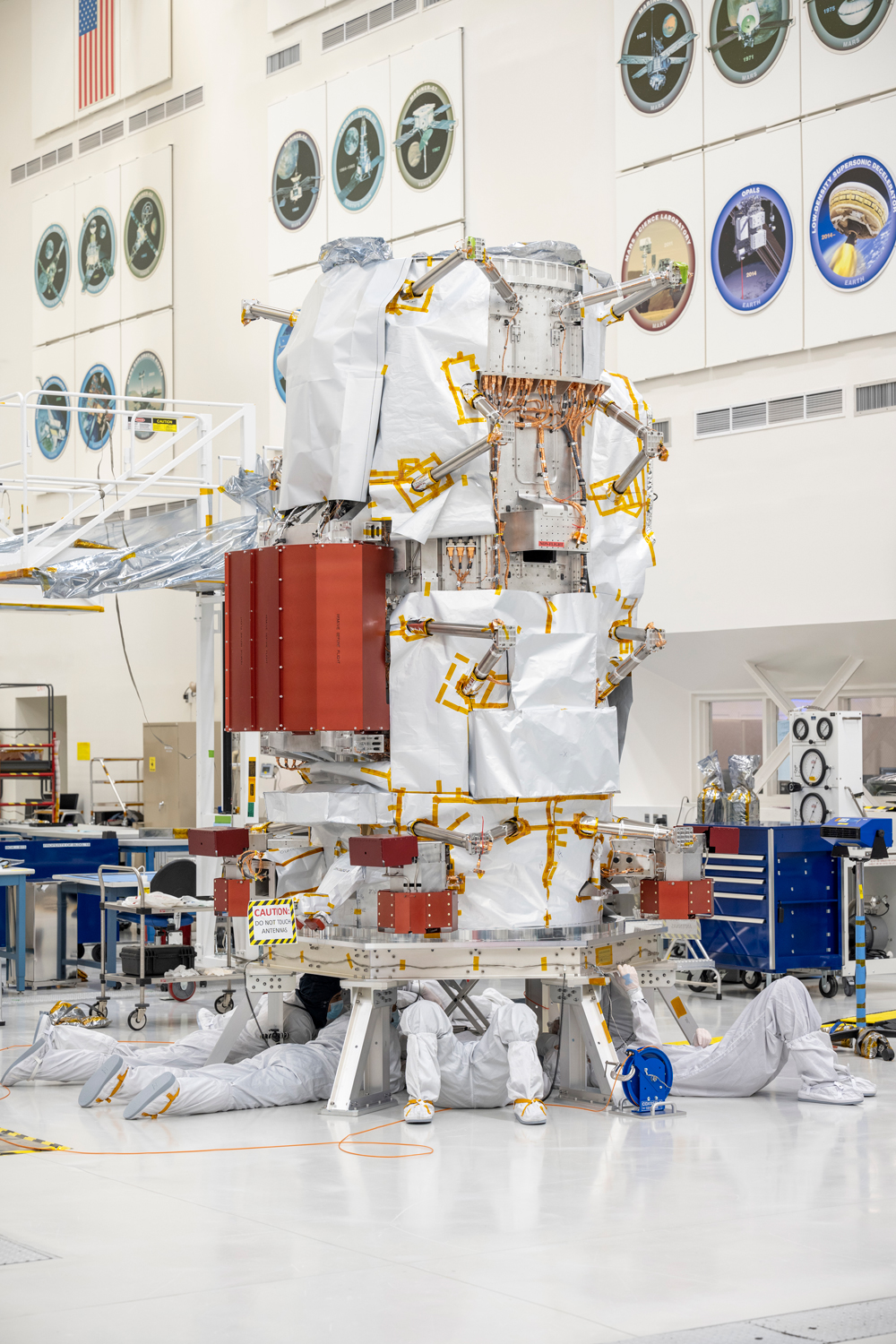All Resources
NASA's Europa Clipper: Reaction Wheel Installation

Engineers and technicians work together to install reaction wheels on the underside of the main body of NASA’s Europa Clipper spacecraft. The integration of the wheels was one of the latest steps of the spacecraft’s assembly, test, and launch operations phase, now underway way in the Spacecraft Assembly Facility at the agency’s Jet Propulsion Laboratory in Southern California. Europa Clipper is set to launch to Jupiter’s moon Europa in October 2024.
When the spacecraft heads through deep space, slips into orbit around Jupiter, and collects science observations while flying dozens of times by Europa, the wheels rotate the orbiter so that its antennas can communicate with Earth and so its science instruments, including cameras, can stay oriented. Two feet wide and made of steel, aluminum, and titanium, the wheels spin rapidly to create a force that causes the orbiter to rotate in the opposite direction. The wheels will run on electricity provided by the spacecraft’s vast solar arrays.
Europa Clipper will conduct nearly 50 flybys of Europa, which scientists are confident has an internal ocean containing twice as much water as Earth’s oceans combined. And the moon may currently have conditions suitable for supporting life. The spacecraft’s nine science instruments will gather data on the moon’s atmosphere, surface, and interior – information that scientists will use to gauge the depth and salinity of the ocean, the thickness of the ice crust, and potential plumes that may be venting subsurface water into space.


